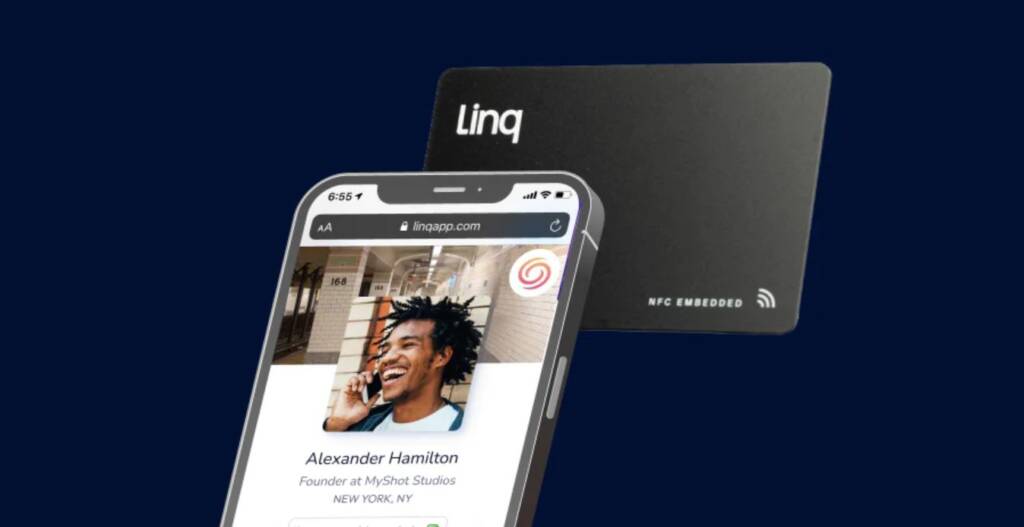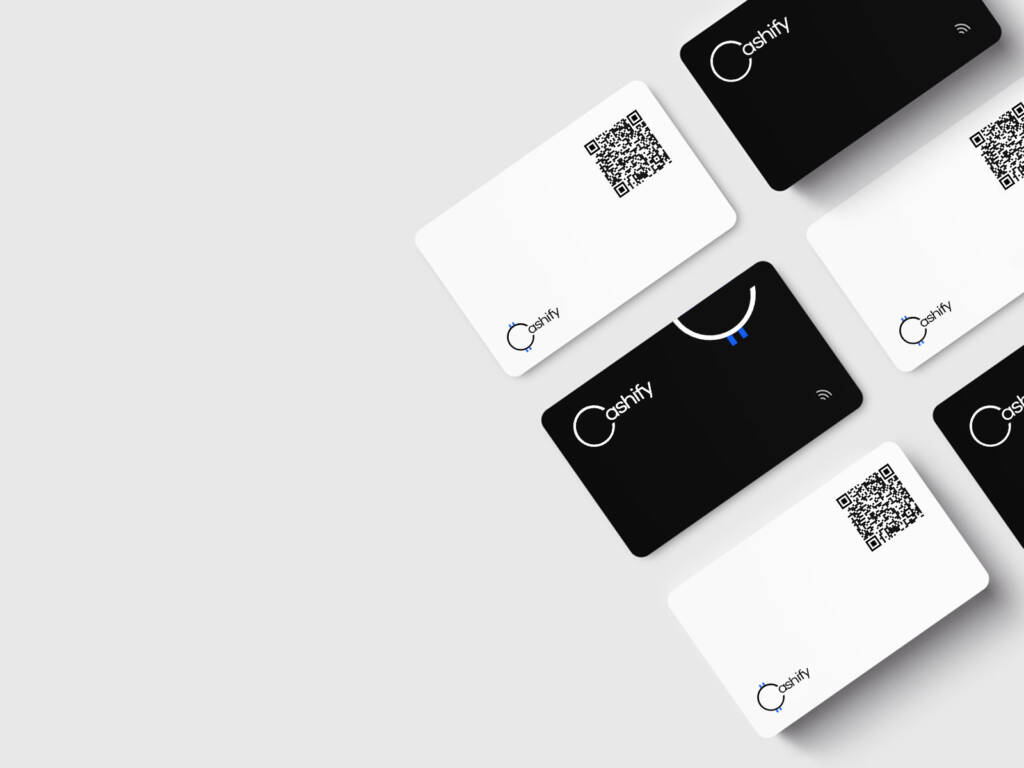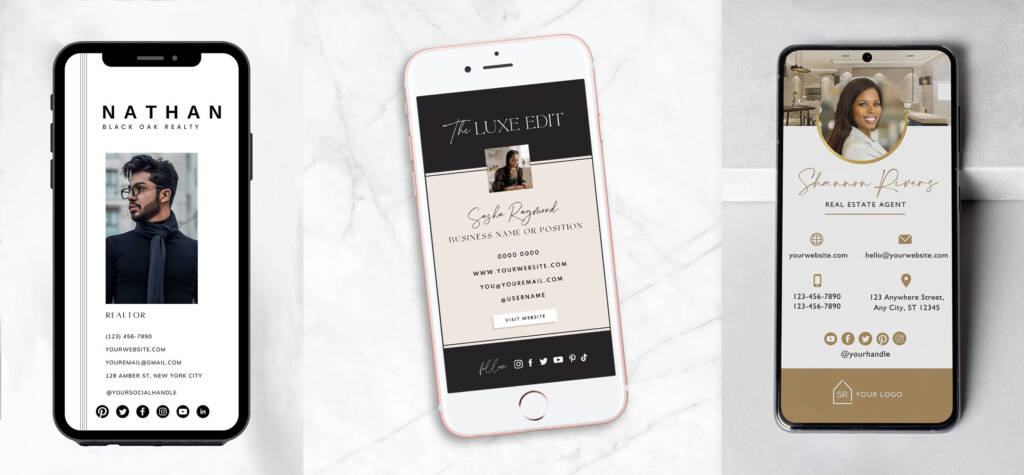Bridging the Gap Between Tradition and Innovation
NFC business cards combine the timeless tradition of exchanging business cards with the convenience and innovation of modern technology. As our world becomes increasingly digital, these cards bridge the gap between physical and virtual connections.
The Virtual Handshake: How NFC Business Cards Work
NFC (Near Field Communication) technology, a wireless communication technology enables two devices in proximity to communicate with each other, and it’s the technology that powers contactless payments and smartphone interactions. An NFC business card looks similar to a traditional business card, but it’s embedded with a small NFC chip. When you tap an NFC-enabled smartphone on the card, it triggers the transfer of information – your contact details, website links, portfolio, and more – directly to the recipient’s smartphone. Think of it as a virtual handshake, an instant connection that goes beyond the limitations of a physical card. This contactless interaction has the power to revolutionize how professionals connect.

NFC business cards and digital profile by Linq.
Advantages of NFC Business Cards
NFC business cards come with many advantages such as:
1. A Lasting Impression
Due to their rarity, NFC business cards can leave a lasting impression on recipients who encounter this innovative technology for the first time.
2. Efficiency Personified
There’s no need to fumble with phones to type contact information. A simple tap effortlessly transfers data, saving time and minimizing errors. Collecting, storing, and organizing physical business cards also become redundant. Instead, you have an organized, searchable database at your fingertips.
3. Rich Media Support
These cards can transmit more than just text and numbers. You can build a profile and include links to your website, portfolio, social media profiles, and even videos, and transfer all of that information instantly.
4. Sustainability
In a world increasingly conscious of environmental impact, NFC business cards offer a sustainable alternative by reducing paper waste. While physical cards are produced in the hundreds, only one NFC card per person can be sufficient. These cards don’t change owners: instead of a physical transfer of cards, digital information is exchanged between the contacts.
Considerations and Challenges
Despite their numerous advantages, NFC business cards do come with a few considerations:
- Tech Compatibility: Both the sender’s and recipient’s devices must be NFC-enabled for the exchange to work. While this technology is becoming more common, it’s not yet universally adopted. Depending on the profession and age group of your contacts, it’s also possible that while your contacts have access to NFC technology, they don’t feel comfortable using it.
- Security: The NFC transmission of your data could come with a security hazard if your NFC card is configured securely.
- Cost: NFC business cards are also somewhat pricier, and some of the offers that include a database for your contacts come with a monthly or yearly subscription price. However, at some providers, you can use your existing database of Outlook or Google contacts without additional cost.
Customization and Design Options
Since NFC business cards are meant to transfer information digitally instead of physically, you don’t have to hand them over to your contacts. As a result, NFC business cards don’t necessarily need a custom layout. Some providers only have simple, non-branded cards in their selection of different materials, like metal, wood, or plastic. Some others offer branding options such as custom colors, logo designs, fonts, and shapes. In fact, transferring data near-field doesn’t require a card format. NFC tags come in many shapes and forms, like stickers, pop sockets, or keychains. They could even be embedded into mascot figures, jewelry, phone cases, or handcuffs in the future.

NFC business card design for Cashify by Fahad khalid Sadberg.
Alternative Solutions: Going digital without NFC
There’s a solution that can provide you with most of the advantages an NFC card can, and in some ways, even better: a digital business card. Companies like HiHello provide digital cards with advanced options for sharing, analytics, integration, and design. Their cards can be shared in person (by QR code, Apple Watch, AirDrop), but can also be sent and received digitally (by email, text, social media, etc). Since no physical card is produced, this purely digital solution is eco-friendlier than paper cards, or NFC cards. It’s also very versatile and lacks some of the security and reliability issues of the NFC technology.
Alternatively, you can digitalize your physical business cards and store them in one place with a card scanner app like BizConnect, CamCard, or Haystack. Some companies like Mobilo offer an all-in-one solution that includes digital business cards, a card scanner, a database for your contacts, and more. If your contacts are not yet using NFC technology but are comfortable scanning QR codes, you can transfer your vcard information that way. You can keep your QR code on your phone or in your digital business card provider’s application or print it on your physical business cards. The app typically offers multiple sharing options, such as URL or Bluetooth. If you prefer to hand over something tangible, combining a physical card with a QR code is an excellent choice. This way, you can avoid typing out the contact information, and your contacts can still have something to hold onto. For more details on the subject, read The QR Code Developer‘s article titled “How to Create and Use QR Code Business Cards“.

Digital business card layouts by ModernRealtorCo, BlogPixie and Art Studio Dandelion.
Conclusion
The future of networking is here, and it’s digital. Innovative business cards, like digital and NFC cards, can streamline the exchange of information and leave a lasting impression on those you meet. However, it’s essential to consider factors like device compatibility and security when embracing this technology. While NFC business cards are on the rise, alternatives like digital business cards and scanner apps provide flexible solutions, ensuring accessibility for all.

